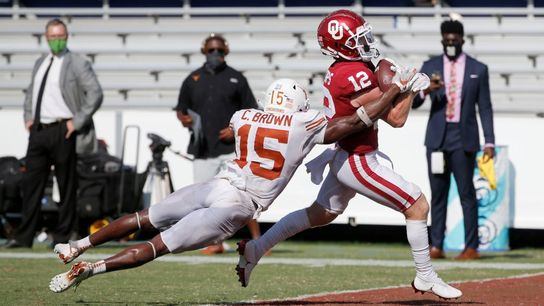In 2019, in response to the marathon LSU-Texas A&M game on the last Saturday of the 2018 regular season, the NCAA changed the overtime rules that turns the game into a volley of 2-point conversions beginning with the fifth extra period.
On Thursday, the NCAA pushed that never-ending-two-point-try forward even further.
Beginning this fall, teams will be required to go for two beginning in the second overtime (previously it was the third), and after the second overtime, the game will become dueling two-point conversions.
"This rules change is being made to limit the number of plays from scrimmage and bring the game to a quicker conclusion. Teams can still choose whether to kick the point after touchdown or run a 2-point conversion play during the first overtime period," the Playing Rules Oversight Panel announced.
If the goal is a quick end to overtime, one has to wonder why the Panel didn't do away with PATs altogether and require 2-point conversions throughout overtime. Waiting until the second frame likely just prolongs the inevitable.
I asked AFCA executive director Todd Berry about the organization's position on shortening overtime by moving the other way -- starting the extra frames at the 40 rather than the 25 -- but he said coaches didn't want to see overtime decided by field goal kickers.
If the goal is to reduce strain on players, there are other options beside dueling 2-point tries. There's the old California tug-of-war, where the ball starts at midfield and each team gets four chances to push the ball in the opponent's territory. There's also the Georgia high school option, where each team gets four snaps from the 10 and the team that scores first or gains the most yards wins.
Or we could do the truly equitable option and bring back the (regular season) tie, but the world isn't ready for that yet. My DMs are open when you're ready to have that conversation.
Other changes announced Thursday:
-- Increasing the bench area. Team sidelines can now stretch to the 20-yard line on each side, an increase from the 25. The sideline area was temporarily expanded to the 15 this past season to accomodate as much social distancing as possible.
-- Holding the video and lighting crews accountable. Home teams can now be assessed unsportsmanlike penalties if the officials view their video board and lighting operators have created "any distraction that obstructs play." This is likely in response to the LED lighting teams have installed and weaponized across SEC stadiums.
-- Cracking down on faking injuries... eventually. The Panel did not announce any actionable punishments for teams caught faking injuries, but they wanted us to know they "supported the Football Rules Committee proposal to provide a framework to allow a school or conference to request a postgame video review about questionable actions through the NCAA secretary-rules editor/national coordinator of officials." They're on to you, folks.
-- Points of emphasis for 2021.
- For the 85th year in a row, the NCAA's rule minders would like to crack down on taunting. "Committee members think these actions reflect poorly on the game and can lead to unnecessary confrontations." There aren't enough eye rolls in the world for this trash. Someone, please get it through the Panel's heads that no one watches college football to see players behave like schoolchildren. Come on, man.
- Officials have been instructed to send players out of the game for violating dress code. This specifically applies to "pants, jerseys and T-shirts that extend below the torso."
- The NCAA is warning coaches that leaving the sideline and/or the coaching box to argue with officials should be met with an automatic unsportsmanlike conduct foul. We'll see how strictly that's enforced.
The 2021 season can't get here soon enough. In the meantime, stay tuned to The Scoop for the latest.
